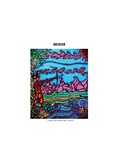| dc.rights.license | http://creativecommons.org/licenses/by-nc-sa/3.0/ve/ | |
| dc.contributor.author | Castro, Azucena | |
| dc.date.accessioned | 2012-11-09T14:03:43Z | |
| dc.date.available | 2012-11-09T14:03:43Z | |
| dc.date.issued | 2012-11-09T14:03:43Z | |
| dc.identifier.issn | 1315-9453 | |
| dc.identifier.uri | http://www.saber.ula.ve/handle/123456789/36255 | |
| dc.description.abstract | El presente artículo analiza la profusión de secuencias
ekphrásticas en Santa Evita (1995), de Tomás Eloy Martínez,
donde las representaciones fotográficas son un motivo reiterado
en esta novela. Este despliegue visual en la narración da forma
a un collage ekphrástico. La inclusión de tal material fotográfico
codificado en el mensaje lingüístico no sólo refleja los variados
significados y mensajes que tiene la fotografía en una sociedad
saturada de imágenes, sino que también manifiesta la apropiación
de las herramientas fotográficas para la práctica literaria. Más
aún, los momentos ekphrásticos revelan puntos de convergencia
y enfrentamiento entre dos “otros”, es decir, dos polos o sistemas
diferentes que se generan en ese punto donde imagen y escritura
convergen en la ékphrasis. | es_VE |
| dc.language.iso | es | es_VE |
| dc.rights | info:eu-repo/semantics/openAccess | |
| dc.subject | fotografía | es_VE |
| dc.subject | visión | es_VE |
| dc.subject | ékphrasis | es_VE |
| dc.subject | narración | es_VE |
| dc.subject | collage | es_VE |
| dc.title | Grafías de la foto: el collage ekphrástico en Santa Evita de Tomás Eloy Martínez | es_VE |
| dc.title.alternative | Writings of the photograph: the ekphrastic collage in Tomás Eloy Martínez’s Santa Evita | |
| dc.type | info:eu-repo/semantics/article | |
| dc.description.abstract1 | This article analyses the profusion of ekphrastic sequences
in Tomás Eloy Martínez’s Santa Evita (1995), in which the
photographic representations are a recurring theme. This visual
display in the narration amounts to an ekphrastic collage. The inclusion of such photographic material codified in the linguistic
message does not only reflect the various meanings and messages
that the photography has in a society saturated by images, but it
also manifests the appropriation of the photographic tools by the
literary practice. Moreover, the ekphrastic moments reveal points of
convergence and confrontation between two “others”, two diferent
systems which are generated at that point where image and writing
converge in ekphrasis. | es_VE |
| dc.description.abstract1 | Cet article analyse la profusion de séquences ekphrastiques
dans le roman Santa Evita de Tomás Eloy Martínez (1995), dans
lequel les représentations photographiques sont un thème récurrent.
La présense d’éléments visuels dans la narration donne forme à un
collage ekphrastique. L’insertion de ce matériel photographique
codifié dans le message linguistique reflète non seulement les
diverses significations et les messages que véhicule la photographie
dans une société saturée d’images, mais il met aussi en évidence
l’appropriation des outils photographiques par la pratique littéraire.
En outre, les moments ekphrastiques révèlent des points de
convergence et de confrontation entre deux «autres», deux systèmes
qui sont également générés à ce point où l’image et l’écriture
convergent dans l’ekphrasis. | es_VE |
| dc.description.colacion | 25 - 43 | es_VE |
| dc.description.email | azugreen33@gmail.com | es_VE |
| dc.description.frecuencia | anual | |
| dc.publisher.pais | Venezuela | es_VE |
| dc.subject.Mots-cles | photographie | es_VE |
| dc.subject.Mots-cles | vision | es_VE |
| dc.subject.Mots-cles | ekphrasis | es_VE |
| dc.subject.Mots-cles | narration | es_VE |
| dc.subject.Mots-cles | collage | es_VE |
| dc.subject.facultad | Núcleo Táchira (NUTULA) | es_VE |
| dc.subject.grupoinv | Grupo de Investigación en Literatura Latinoamericana y del Caribe | |
| dc.subject.keywords | photography | es_VE |
| dc.subject.keywords | vision | es_VE |
| dc.subject.keywords | ekphrasis | es_VE |
| dc.subject.keywords | narration | es_VE |
| dc.subject.keywords | collage | es_VE |
| dc.subject.postgrado | Postgrado en Literatura Latinoamericana y del Caribe | es_VE |
| dc.subject.publicacionelectronica | Contexto. | |
| dc.subject.seccion | Contexto: Dossier | es_VE |
| dc.subject.thematiccategory | Artes y Humanidades | es_VE |
| dc.subject.tipo | Revistas | es_VE |
| dc.type.media | Texto | es_VE |


